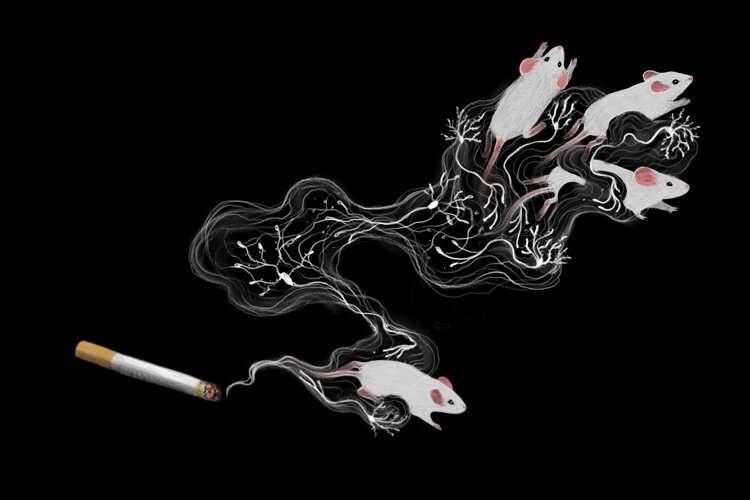
Nicotine can be addictive because it activates the brain's dopamine network, making us feel good. Researchers at UC Berkeley have shown in mouse experiments that high doses of nicotine can also activate a newly-discovered dopamine network that responds to unpleasant stimuli. This unpleasant dopamine network could be used to create a therapy that enhances negative effects and reduces nicotine reward. While the first experience of smoking may be nauseating, for many people, the benefits of nicotine outweigh the negative effects of high doses.
Researchers at the University of California, Berkeley have identified specific brain networks responsible for negative consequences of nicotine, opening up possibilities for intervention measures that can enhance aversion and aid in smoking cessation. Although most high-dose addictive drugs can cause physical symptoms that lead to loss of consciousness or even death, nicotine is unique in that it can cause discomfort when consumed in large quantities. As such, nicotine overdoses are rare, although the advent of e-cigarettes has made "nicotine" symptoms such as nausea and vomiting, dizziness, increased heart rate, and headaches more common.
A new study conducted on mice suggests that manipulating the aversion network can be used to treat nicotine addiction. "Decades of research have focused on understanding how nicotine reward leads to drug addiction and what the potential brain circuits are. In contrast, the brain circuits mediating nicotine aversion have largely been understudied," said Stephan Lammel, associate professor at UC Berkeley, specializing in molecular and cellular biology.
We have discovered that the brain circuits activated by a high aversion dose are actually different from those activated by low-dose nicotine release. With this new understanding of the different brain circuits, we believe that we may be able to develop a medication that can activate these circuits together when nicotine is consumed at a low dose, causing acute aversion effects. This could potentially be a highly effective treatment for nicotine addiction in the future, for which we currently have no such treatment.
Researchers Lammel and Christine Liu, who recently obtained their doctoral degrees from the University of California, Berkeley, have discovered that nicotine receptors in the reward pathway can become desensitized to high levels of nicotine, potentially leading to negative experiences at high doses. "The desensitization of nicotine receptors in inhibitory inputs and dopaminergic neurons itself contributes to reduced dopamine signal transmission in the reward pathway, which then reduces pleasure and subsequently reduces aversion behavior," Liu said. The study, which was accepted for publication in the journal Neuron, was co-authored by Amanda Tose and other colleagues and describes the brain circuitry involved in nicotine aversion.
As is well known, nicotine, like cocaine and heroin, can lead to addiction by activating the reward system in the body. Nicotine binds with receptors on cells and releases the neurotransmitter dopamine into the brain, affecting everything from pain perception to emotions and memory. Generally speaking, the dopamine network provides positive reinforcement and strengthens our desires to seek pleasurable activities.
Three years ago, Lamer and his colleagues discovered a parallel dopamine network that responds to unpleasant stimuli by releasing dopamine into different areas of the brain, rather than the dopamine reward network. The discovery of this yin-yang characteristic of dopamine occurred when it was found that dopamine plays vastly different roles in various regions of the brain, such as its role in voluntary movement affected by Parkinson's disease.
Following this, Lammel's team discovered that certain chemicals can also stimulate the negative dopamine network. Lammel, Liu, and Tose carefully studied the effects of nicotine on the body, as it is known to have aversive effects at high doses, and found that it also activates the network.
The subcircuit we report on has had a significant impact in the field," said Lammel. "We have identified for the first time this particular subcircuit of the dopamine system which is activated by negative emotions such as a shock or burst. Now, we have discovered a completely different stimulus - a pharmacological one, a drug - that activates the same system. This means that the system is specifically designed to be activated by aversive stimuli.
To demonstrate the effect of nicotine, Liu and her colleagues injected the substance into mice and measured the amount of dopamine released per second in the brain using a recently developed technique called dLig.
Statement
This article is compiled from third-party information and is intended for industry exchange and learning purposes only.
This article does not represent the views of 2FIRSTS and we cannot confirm the authenticity or accuracy of its content. The translation of this article is intended solely for industry exchange and research purposes.
Due to limitations in translation skills, the translated article may not accurately reflect the meaning of the original. Please refer to the original text for accuracy.
2FIRSTS maintains complete alignment with the Chinese government regarding any domestic, Hong Kong, Macau, Taiwan, and international issues and positions.
The copyright of compiled information belongs to the original media and authors. If there are any infringements, please contact us for removal.
This document has been generated through artificial intelligence translation and is provided solely for the purposes of industry discourse and learning. Please note that the intellectual property rights of the content belong to the original media source or author. Owing to certain limitations in the translation process, there may be discrepancies between the translated text and the original content. We recommend referring to the original source for complete accuracy. In case of any inaccuracies, we invite you to reach out to us with corrections. If you believe any content has infringed upon your rights, please contact us immediately for its removal.






